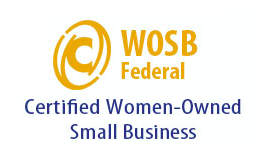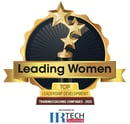
One of the biggest challenges I hear from clients is “How can we bring more women into leadership?” According to a recent report by McKinsey, women continue to be underrepresented at every stage of the corporate pipeline. I am a believer that empowering women in the workplace is not just a moral imperative; it’s a business advantage for any organization. And yet, most companies today face a different reality every time they look at their leadership team or talent pipeline.
Why?
Simply stated, according to McKinsey, progress for women is “much slower earlier in the pipeline.” I agree. Research from MIT shows that female employees are less likely to be promoted than their male counterparts. Our own research conducted by Leading NOW’s Gender Dynamics Institute shows that women who do make it into the middle of the pipeline get stuck there because they lack the critical competencies needed to move from the director level into executive leadership roles. And the "Global Gender Gap Report 2024" by the World Economic Forum shows that while women’s representation in government and corporate environments is increasing, executive positions remain predominantly male.
To bring more women into their talent pipeline, companies must offer a combination of workplace policies, benefits and a culture that supports their career growth and well-being. When organizations don’t provide these expectations, the ongoing war for talent makes engagement even harder for organizations to retain them. Women in today’s workforce are demanding more from their employers, including developmental opportunities. Providing leadership development widens the pool of candidates organizations have to choose from when opportunities for advancement arise. Unfortunately, if development is not provided, this becomes a never-ending cycle of “We don’t have enough women in our talent pipeline; what can we do to fix it?”
Employee resource groups (ERGs) can help. However, ERGs often get a bad rap, possibly from the lack of support, funding or participation or the over-burdened volunteer leaders or the inability to sustain momentum––take your pick. The reality is ERGs can be a powerful tool when effectively structured. Specifically, ERGs for women can create meaningful opportunities for professional development, networking and advocacy—and have a positive impact on talent management within an organization.
To maximize their impact, women-focused ERGs should be strategic in their approach by creating a more business-aligned plan. Here’s how to do it:
Making The Case For ERGs Amid DEI Cutbacks
With companies scaling back DEI initiatives, it’s critical to emphasize the business value of ERGs for women. Some key arguments include:
- Talent Retention And Attraction: Women-focused ERGs help create an inclusive workplace that retains top talent and attracts diverse candidates.
- Employee Engagement And Productivity: Employees who feel supported and included are more engaged, which can lead to higher productivity and job satisfaction.
- Leadership Development: ERGs serve as incubators for leadership, providing members with opportunities to develop skills and advance within the company.
- Innovation And Profitability: Diverse teams are proven to drive innovation and better business outcomes making gender equity a strategic advantage.
Gain Executive Sponsorship
An executive sponsor can be a powerful advocate for your ERG. Ideally, this should be a senior leader who is influential within the organization and committed to advancing gender equity. Their support can help secure funding, increase visibility and drive policy change.
Align With Organizational Goals
Volunteer ERG leaders should work with leadership to identify key business challenges and position the ERG as part of the solution. A successful ERG should be more than a social group; it should directly impact the organization. Aligning with corporate goals such as leadership development, retention and innovation ensures that the ERG is seen as a valuable asset, worthy of an investment.
Offer Professional Development Opportunities
An effective ERG should serve as a career accelerator for its members by:
- Offering leadership development workshops and networking opportunities.
- Encouraging mentorship and sponsorship programs that connect emerging talent with senior leaders who can help advance their careers.
- Leveraging external resources such as ERG toolkits to get the tools volunteer leaders need to deliver a program of high-impact learning workshop content.
- • Utilizing management software tools to track the ERG’s impact and justify its value to leadership.
Engage Male Allies
Advancing gender equity isn’t just a women’s issue. It benefits the entire organization. Engage male allies by inviting them to events, encouraging advocacy and fostering discussions on inclusive leadership. Their support can help amplify the ERG’s influence and impact.
Ensure Sustainability And Succession Planning
To maintain momentum, ERGs need a long-term vision. Develop a leadership pipeline within the ERG to ensure continuity as members move into new roles. Document best practices and create an onboarding process for new members and volunteer leaders.
Being strategic with a women’s ERG means moving beyond informal networking to actively shaping workplace culture and leadership opportunities. By aligning with business goals, the impact of the ERG will better serve the organization’s needs for talent management and business strategy execution. And when leveraging executive support and focusing on measurable impact, women’s ERGs can become powerful agents of change within organizations.
----
 This article was originally written for the Forbes Human Resources Council, and published on the Forbes website in March 2025. You can see Kelly Lockwood Primus' other Forbes articles on her author page.
This article was originally written for the Forbes Human Resources Council, and published on the Forbes website in March 2025. You can see Kelly Lockwood Primus' other Forbes articles on her author page.







